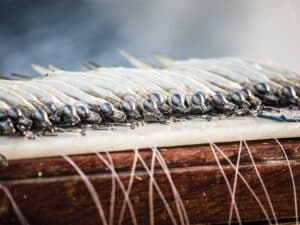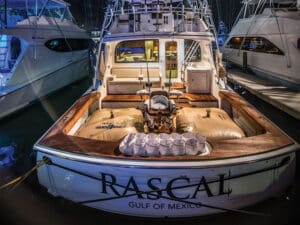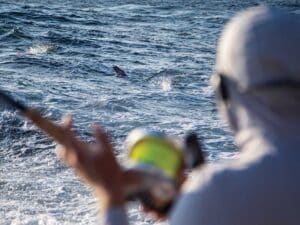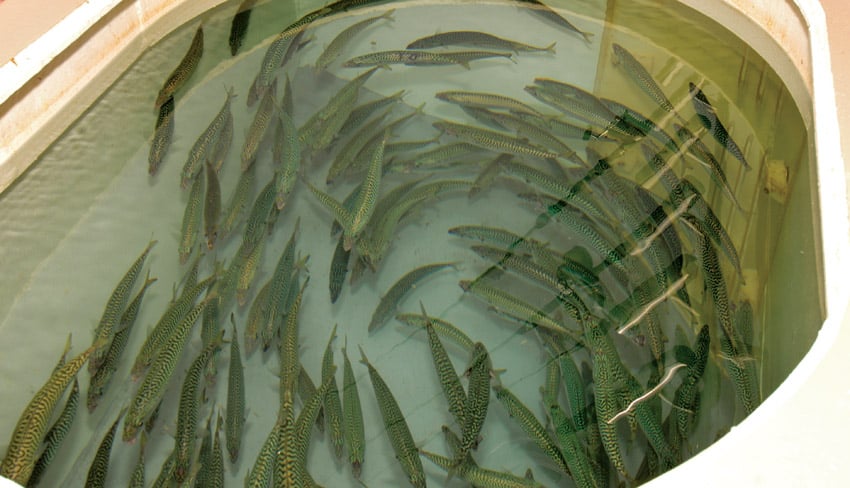
You’re trapped in a hot, dark, stuffy fiberglass jail cell. Merely breathing is difficult, and you can barely move. Then the cell starts shaking and rolling violently, slamming you against the hard walls and floor. You’re bruised and battered, sweaty, and gasping for air when the ceiling is suddenly peeled back. Weak and nauseous, you feel yourself being yanked from the cell and plunged underwater. Desperately holding your breath, you see a monstrous needle quickly moving toward your head.
Now you know how a baitfish feels when you take it out of the livewell and get ready to bridle it to a hook. It’s no wonder that a large number of the baits we rig up die in a matter of minutes or fail to give us that high-energy tail wiggle that predators find so enticing. You want to catch more fish? Then start giving them better baits — by housing your live offerings in the ultimate livewell.
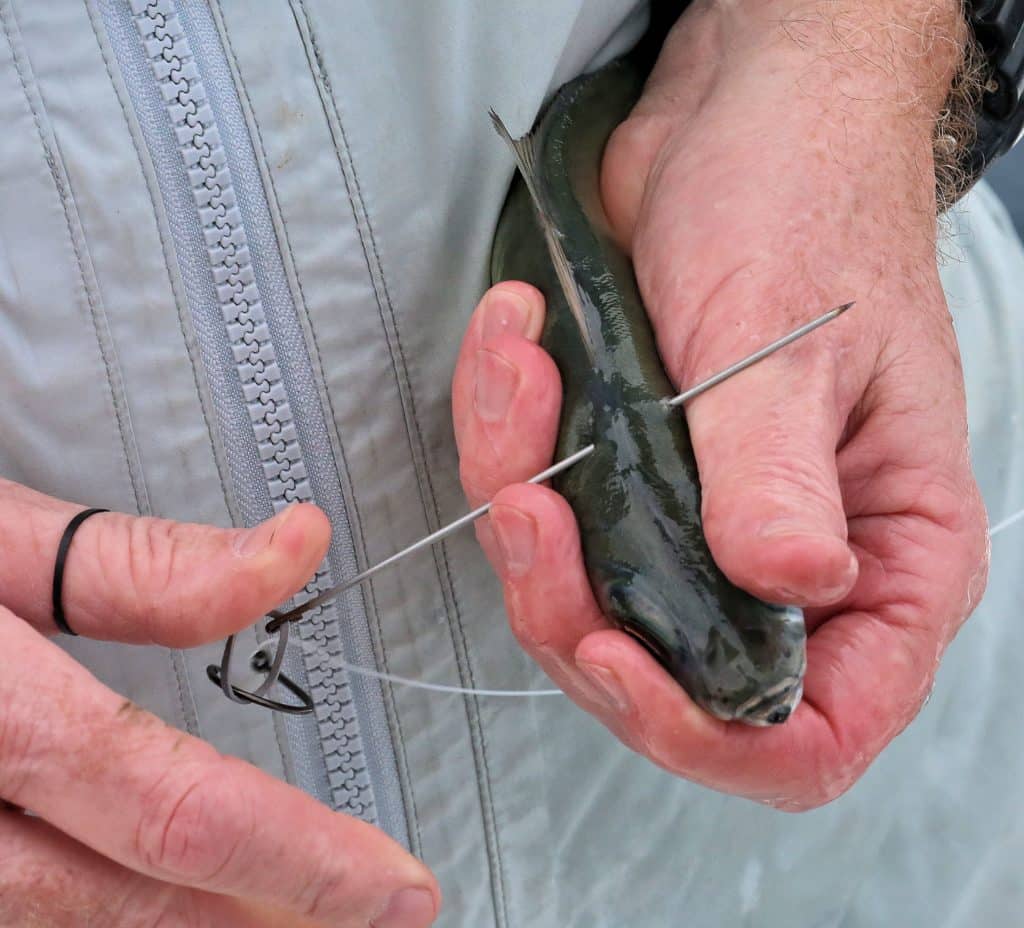
What’s the Best Livewell Setup?
Livewells for offshore baits can be divided into two main types: tanks and tubes. Livewell tanks are far more common, but tuna tubes are necessary for keeping large marlin baits like Spanish mackerel, false albacore and skipjacks. Whether you’re using tubes or tanks, the single most important factor affecting your bait’s health is water flow. If your flow is insufficient, your baits die from lack of oxygen. If it’s too strong, your baits die of exhaustion while fighting the artificial current. So, how much flow is the right amount for a flow through livewell? Unfortunately, there’s no cut and dry answer, because different types of baitfish do better with different amounts of water flow. High-speed fish that need a lot of oxygen — like tinker mackerel — need faster-moving water than fish like goggle-eyes.
The solution to keeping different species of baits alive and kicking is variable water flow. This can be accomplished with adjustable control valves, available from companies like Rule, ITT and Flow-Rite, which are installed in the plumbing that feeds water to your tanks and tubes. What about those adjustable flow inlets that you find mounted in some bait tanks? Forget about them — if your livewell has a single inlet point, it already can’t qualify as one of the best livewells. Where the water enters a well can be just as important as how much enters it, because single inflows can fail to efficiently mix the water. As a result, low-oxygen “dead spots” can form. To prevent this problem, the best livewells sport multiple water inlets spaced from top to bottom.
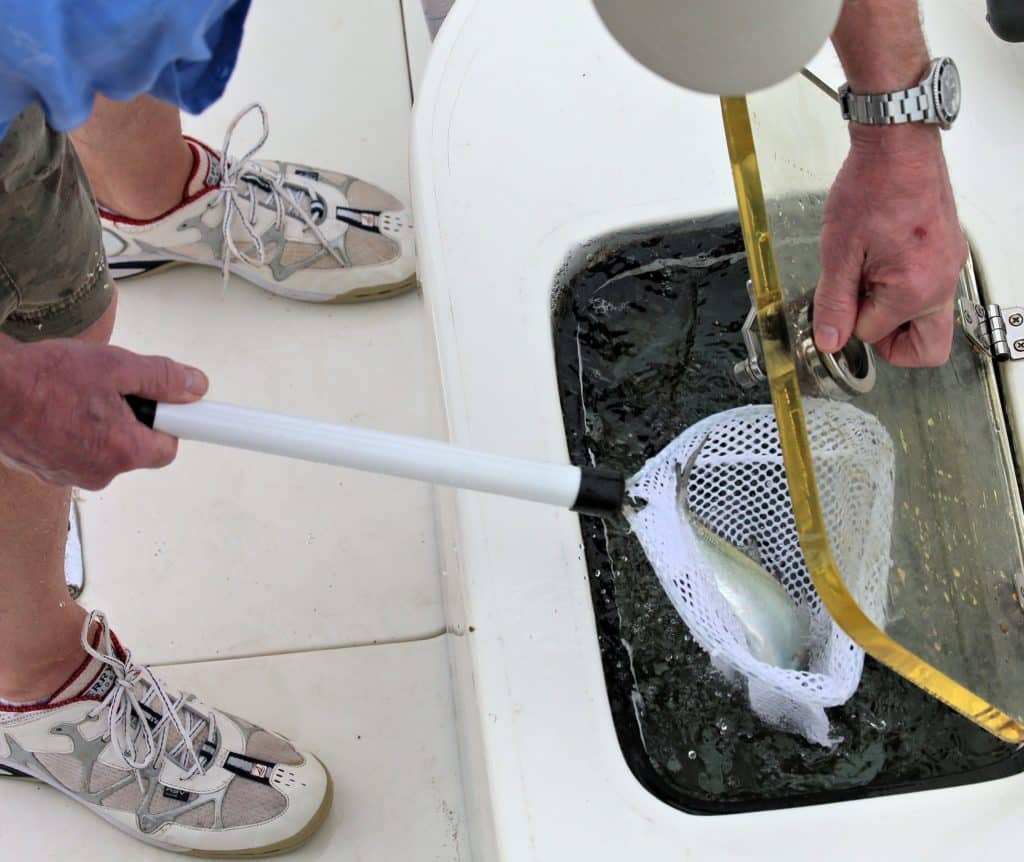
Naturally, you can’t dial up an adjustable flow above the pump’s capacity. So the ultimate livewell needs to have more than enough power to get the job done. Just how much juice does it take? To find out, we spoke with a guy who’s devoted much of his life’s work to keeping fish alive in captivity, Dr. Daniel Benetti, director of aquaculture at the University of Miami’s Rosenstiel School of Marine and Atmospheric Science.
“Of course it depends on the size of the tank, but in general, to keep fish in top condition, the water should turn over at a rate of around 1,000 times a day,” he says. “It’s not just a matter of oxygenation, but also of removing ammonia and waste, as well as creating an ideal current.”
That means a livewell pump should be able to move about 42 times the tank’s capacity, per hour. In the case of a 30-gallon livewell, a pump that pushes 1,260 gph or more will keep most baits in prime condition. For a 50-gallon tank, a pump with 2,100 gph or more would do the trick.
As far as water velocity goes, Dr. Benetti’s experience — which includes raising goggle-eyes from the time they were fry until the time they were used as live baits to catch the university’s brood stock of tuna — has shown that an ideal current will move at about the same distance as one body length of the fish in captivity per second. “You can use this as a general rule,” he says, “and that’s about the minimal flow we look for with most pelagic fishes. But more, of course, is merrier.”
When it comes to keeping 10-pound baitfish in tubes, moving water fast enough to cover one body length per second is quite a high rate of flow. Tunas breathe via ram ventilation (water is forced through their mouth and over their gills by their forward motion, as opposed to fish that can bring water over their gills by pumping their jaws), so in the wild, some tuna species need to maintain a speed of about 0.65 meters per second just to breathe. How does this speed translate into water flow? As a general rule of thumb, if you plan to keep skipjacks and bonito of this size in tip-top condition for more than a few minutes at a time, you’ll want to have a minimum of 1,000 gph blasting through each tube they’re swimming in — and 1,500 gph is better.
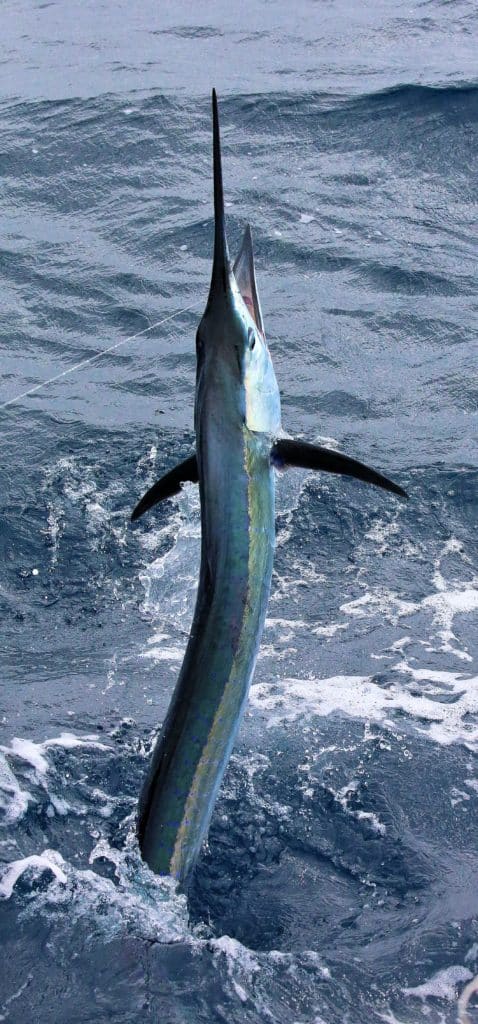
What to Know about Boat Livewell Pumps
The heart and soul of your system is going to be the pump, but as you can quickly ascertain from the flow requirements just discussed, most off-the-shelf livewell pumps aren’t going to get the job done. They’re designed to feed common factory-installed 30- to 50-gallon livewells — and little more. Those you’ll find on the shelves of boating supply stores top out at around 1,500 gph, and only a handful in the 2,000 gph range are available. For heavy-duty systems that integrate large tanks and multiple tuna tubes, you’ll need one of the best livewell pumps available that are rated in horsepower, not gallons per hour.
An excellent example of a custom-designed high-octane livewell system can be found on Salty, a 63-foot Weaver built for live-baiting marlin and tuna off the Pacific coast. Noted sport-fishing captain Josh Temple, boatbuilder Jim Weaver and owner Steve Danziger worked together to come up with an eight-tube, triple-tank system with a 440-gallon livewell capacity. “We do a lot of live-baiting for blue and black marlin and giant yellowfin tuna,” Temple says. “So we need to be able to keep large baits — and large numbers of baits — in good shape at all times.”
To accomplish the task, they needed something far more potent than the common livewell pump — and they found it in a pair of 1.5-horsepower Hayward pool pumps, which move over 4,000 gph each. They plumbed the pumps to a manifold system that allows them to make individual adjustments of water flow to each of the gunwale-mounted tuna tubes, the 250-gallon main tank, the 100-gallon secondary tank and a 90-gallon backup tank. This setup can provide up to 1,850 gph of flow to each section. The downside? The pumps run on 110, so Temple needs to run the generator to keep his baits kicking. Murphy’s Law dictates that if the genset ever goes down, or a Hayward pump blows a gasket, it’ll happen when you’re fishing in the biggest tournament of the year, right? No worries; that’s when the 24 V backup pump kicks in. Water flow drops to around 25 percent, but it buys some time to get the system up and running, or at the very least, maintain a sufficient flow in one of the smaller tanks.
Of course, there are many other qualities that a livewell must have to keep your baits swimming strong, but when push comes to shove, water flow rules. Just ask that tired, gasping fish the next time you pull it out of that hot, stuffy fiberglass jail cell and raise a rigging needle to its nose.
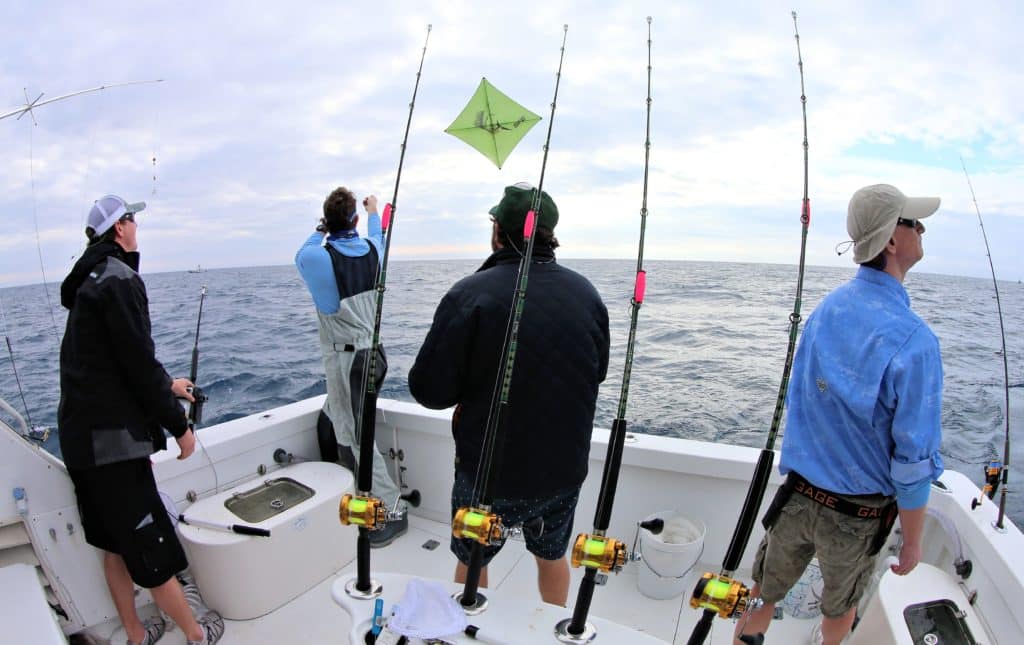
Livewell Do’s and Don’ts
Good water flow and large size alone aren’t enough. In order to qualify as one of the best livewell setups, you’ll also need all of these other bait-saving factors on your side.
Do’s
- Baby-blue interiors — Reflective, white gel-coated walls confuse and overly excite the bait. As a result, they often swim erratically and bash into the hard fiberglass walls. Baby-blue interiors, however, seem to have a calming effect on the fish. Some captains even prefer black or dark blue walls for their tubes and tanks.
- Backup pumps — Sure, you may only use them every other season, but if you’re loaded for bear and fishing in a tournament, that’s when your pump or pumps are sure to fail. All of the best livewell systems come with built-in backup systems.
- Viewing ports — These give you the ability to keep an eye on your baits and make sure they’re in good shape throughout the day.
- Central location — Wells located on one side of the boat or the other are prone to more sloshing (which can beat up baits) than center-mounted wells.
- Hatches that dog down on gaskets — Nothing stinks more than getting soaked by your own livewell as water sloshes out on a rough day.
- Red LED night light — Red lights won’t scare the fish or ruin your night vision on those overnight excursions for swordfish and bigeye tuna, but they will let you see and catch your baits quickly and easily.
Don’ts You insist on having the ultimate livewell on your boat? Here are some things to avoid when trying to keep your baits frisky for an offshore excursion.
- Squared livewell corners — Baits will ram into the walls and beat themselves to death when confronted with square corners. Oval or round livewell interiors allow the fish to swim in circles without injuring themselves.
- Round tuna tubes — Oval is the correct shape, not round. Oval tubes keep the tuna from spinning when hit with a high-volume flow.
- Pump-share arrangements — Some builders try to save a buck by mounting a single pump for the livewell and washdown systems. This not only works the pump to death and results in early failure; it also provides subpar water flow for both jobs in most cases.
- Drains without strainers — This may be the ultimate livewell blunder. You might not even realize it the first time a bait gets sucked into the drain and then becomes lodged in the plumbing — but you’ll certainly figure it out a week later, when there are maggots crawling out of your livewell drain and the overpowering stench knocks you off the boat.
